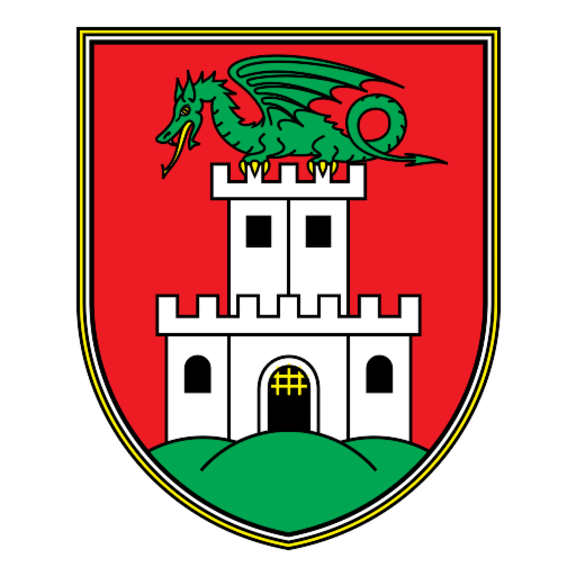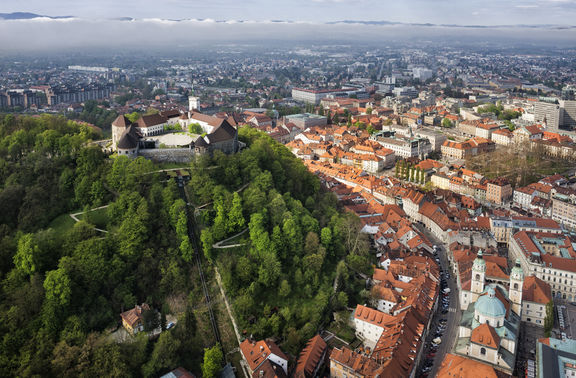Difference between revisions of "Municipality of Ljubljana"
| Line 15: | Line 15: | ||
{{contact | {{contact | ||
|Name=Dr. Uroš Grilc | |Name=Dr. Uroš Grilc | ||
| − | |Role=Head of Culture Department | + | |Role=Head of Culture and Research Activities Department |
|Email= | |Email= | ||
}} | }} | ||
| Line 21: | Line 21: | ||
Ljubljana Urban Municipality covers a total area of 275 square kilometres and has a population of 264,269 people (2002) living in 38 settlements. It is one of 11 Slovene Urban Municipalities and incorporates the Slovene capital city of Ljubljana, the country’s largest city as well as its political, administrative, economic, educational and cultural centre. The Municipality of Ljubljana has signed a number of inter-municipal agreements with other cities of the world: in 1964 with Pesaro and Parma (Italy), in 1966 with Chemnitz (Germany), in 1967 with Bratislava (Slovakia), in 1969 with Sousse (Tunisia), in 1977 with Wiesbaden (Germany) and Tbilisi (Georgia), in 1979 with Leverkusen (Germany) and Rijeka (Croatia), in 1981 with Chengdu (China), in 1999 with Vienna (Austria) in 2000 with Athens (Greece) and Moscow (Russia), in 2001 with Zagreb (Croatia) and in 2002 with Sarajevo (Bosnia and Herzegovina). | Ljubljana Urban Municipality covers a total area of 275 square kilometres and has a population of 264,269 people (2002) living in 38 settlements. It is one of 11 Slovene Urban Municipalities and incorporates the Slovene capital city of Ljubljana, the country’s largest city as well as its political, administrative, economic, educational and cultural centre. The Municipality of Ljubljana has signed a number of inter-municipal agreements with other cities of the world: in 1964 with Pesaro and Parma (Italy), in 1966 with Chemnitz (Germany), in 1967 with Bratislava (Slovakia), in 1969 with Sousse (Tunisia), in 1977 with Wiesbaden (Germany) and Tbilisi (Georgia), in 1979 with Leverkusen (Germany) and Rijeka (Croatia), in 1981 with Chengdu (China), in 1999 with Vienna (Austria) in 2000 with Athens (Greece) and Moscow (Russia), in 2001 with Zagreb (Croatia) and in 2002 with Sarajevo (Bosnia and Herzegovina). | ||
| − | + | The municipal department responsible for culture is Culture and Research Activities Department | |
| − | + | Annually the Župančič Award of the City of Ljubljana is bestowed to the outstanding creators in the field of arts and culture. | |
| − | |||
| − | Župančič Award of the City of Ljubljana | ||
| − | |||
[[Category:Municipal funding]] | [[Category:Municipal funding]] | ||
Revision as of 21:16, 30 September 2009
-
23 May 2024
"SHE - ONA", a vocal-dance solo performance by Anamaria Klajnšček, produced by Flota Institute and Emanat Institute and coproduced by Dance Theatre Ljubljana. Supported by Ministry of Culture and Municipality of Ljubljana.
at the Monotánc Fesztivál
-
12 May 2024
A performance of "Superfluous - Odvečni", based on the famous essay by Ilija Trojanow and conceptualised by EnKnapGroup (EKG). Supported by Ministry of Culture and Department of Culture of Municipality of Ljubljana.
at the Rollercoaster
-
to
2 May 2024
3 May 2024
Two performances of "You Are What You Eat - Si to, kar ješ", a show about rebellions in the context of former Yugoslavia. Produced by Glej Theatre. Supported by European Union, Public Fund for Cultural Activities of the Republic of Slovenia, and Department of Culture of Municipality of Ljubljana.
at the RESISTANCE! Youth Festival of Modern European History
-
20 Apr 2024
"Superfluous - Odvečni", an original dance performance by EnKnapGroup (EKG) with an international cast. Supported by Ministry of Culture and Municipality of Ljubljana.
Ljubljana Urban Municipality covers a total area of 275 square kilometres and has a population of 264,269 people (2002) living in 38 settlements. It is one of 11 Slovene Urban Municipalities and incorporates the Slovene capital city of Ljubljana, the country’s largest city as well as its political, administrative, economic, educational and cultural centre. The Municipality of Ljubljana has signed a number of inter-municipal agreements with other cities of the world: in 1964 with Pesaro and Parma (Italy), in 1966 with Chemnitz (Germany), in 1967 with Bratislava (Slovakia), in 1969 with Sousse (Tunisia), in 1977 with Wiesbaden (Germany) and Tbilisi (Georgia), in 1979 with Leverkusen (Germany) and Rijeka (Croatia), in 1981 with Chengdu (China), in 1999 with Vienna (Austria) in 2000 with Athens (Greece) and Moscow (Russia), in 2001 with Zagreb (Croatia) and in 2002 with Sarajevo (Bosnia and Herzegovina).
The municipal department responsible for culture is Culture and Research Activities Department Annually the Župančič Award of the City of Ljubljana is bestowed to the outstanding creators in the field of arts and culture.




